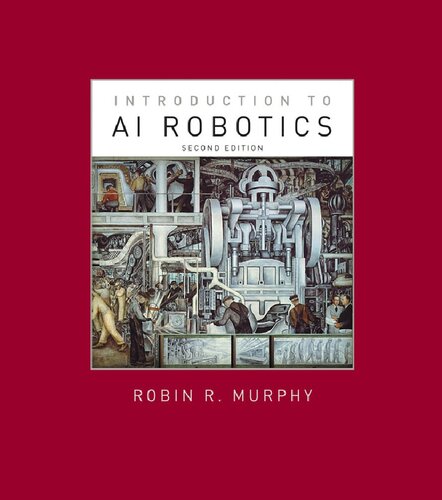

Most ebook files are in PDF format, so you can easily read them using various software such as Foxit Reader or directly on the Google Chrome browser.
Some ebook files are released by publishers in other formats such as .awz, .mobi, .epub, .fb2, etc. You may need to install specific software to read these formats on mobile/PC, such as Calibre.
Please read the tutorial at this link: https://ebookbell.com/faq
We offer FREE conversion to the popular formats you request; however, this may take some time. Therefore, right after payment, please email us, and we will try to provide the service as quickly as possible.
For some exceptional file formats or broken links (if any), please refrain from opening any disputes. Instead, email us first, and we will try to assist within a maximum of 6 hours.
EbookBell Team

4.3
98 reviewsA comprehensive survey of artificial intelligence algorithms and programming organization for robot systems, combining theoretical rigor and practical applications.
This textbook offers a comprehensive survey of artificial intelligence (AI) algorithms and programming organization for robot systems. Readers who master the topics covered will be able to design and evaluate an artificially intelligent robot for applications involving sensing, acting, planning, and learning. A background in AI is not required; the book introduces key AI topics from all AI subdisciplines throughout the book and explains how they contribute to autonomous capabilities.
This second edition is a major expansion and reorganization of the first edition, reflecting the dramatic advances made in AI over the past fifteen years. An introductory overview provides a framework for thinking about AI for robotics, distinguishing between the fundamentally different design paradigms of automation and autonomy. The book then discusses the reactive functionality of sensing and acting in AI robotics; introduces the deliberative functions most often associated with intelligence and the capability of autonomous initiative; surveys multi-robot systems and (in a new chapter) human-robot interaction; and offers a “metaview” of how to design and evaluate autonomous systems and the ethical considerations in doing so. New material covers locomotion, simultaneous localization and mapping, human-robot interaction, machine learning, and ethics. Each chapter includes exercises, and many chapters provide case studies. Endnotes point to additional reading, highlight advanced topics, and offer robot trivia.